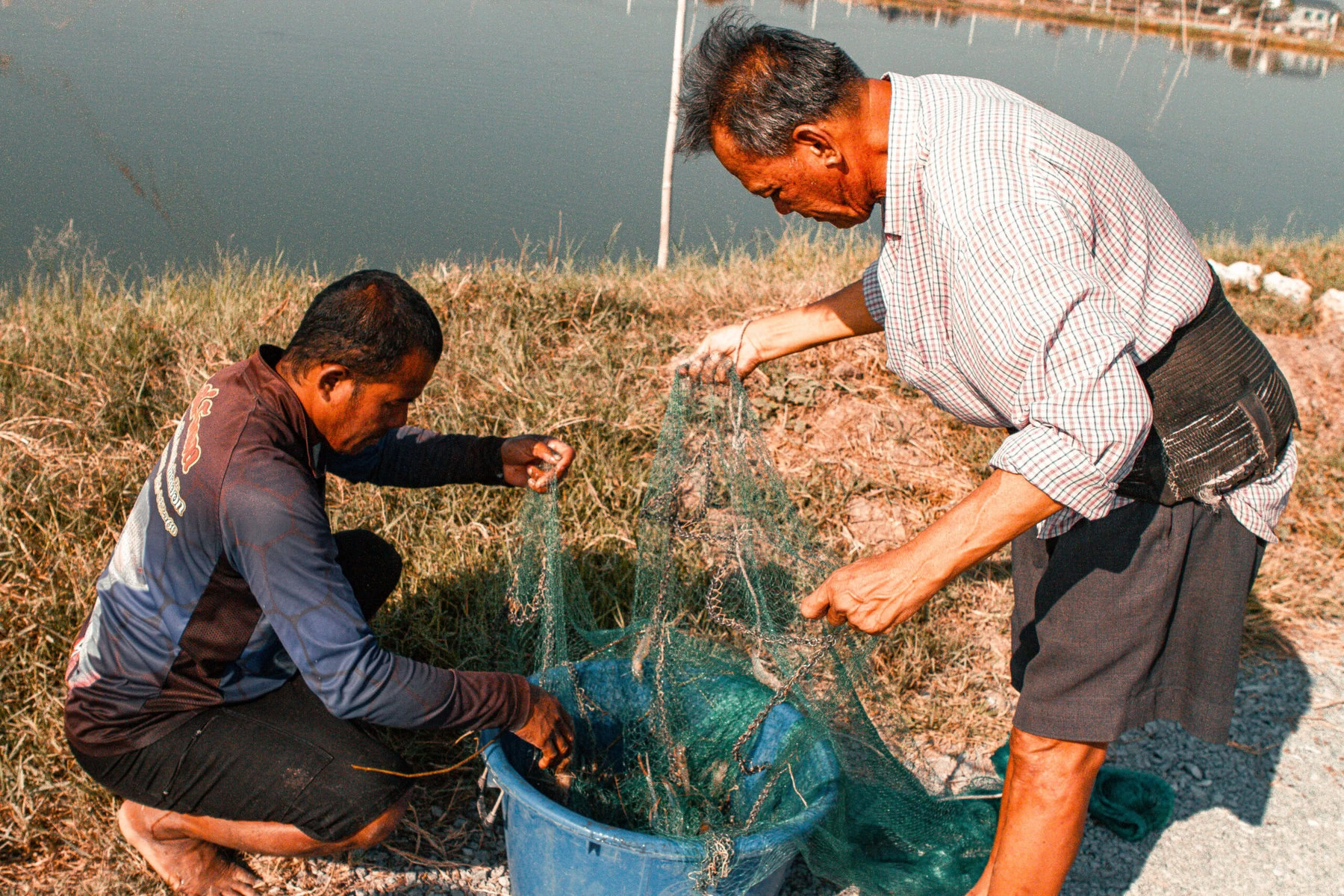
reasonstobecheerful.world
Adopting the Aquaculture of the Future in Thailand
Somporn Kaikaew is the owner of Prapapan Farm in Nakhon Pathom‚ a city 40 miles west of Bangkok. He farms tilapia fish and white shrimp across 160‚000 square meters of land.
We hitch a ride on the back of Somporn’s pickup truck‚ driving along the dusty roads that separate the fish farm’s large ponds of water. His farm is tightly operated‚ with the ponds segregated neatly‚ along with bird traps and scarecrows to deter predators and sophisticated recirculation systems to keep the water clean.
There are thousands of monoculture fish farms in Thailand‚ but Somporn‚ 60‚ has been practicing polyculture fish farming for the best part of three decades. When asked whether it was a more complicated operation farming multiple species‚ he said it’s all he’s ever known.
Somporn Kaikaew (right) has been practicing polyculture on his fish farm for 30 years. Credit: Tommy Walker
“I’ve had this farm for 30 years and I’ve always mixed from the beginning. I copied from another farmer‚ it looked like it worked so that’s why I did it‚” he said.
In Thailand‚ farming fish and shrimp together is one of the most common practices in polyculture farming. It’s also the first step toward bigger changes in sustainability that Thailand’s aquaculture and fishing industry could see in the coming years.
That’s the hope of aquaculture experts as they prepare to convince more of Thailand’s fishing farmers to shift to a more sustainable model in which marine species are grown within the same system. That system‚ which is already being successfully practiced on a few fish farms in Thailand as well as in many other places worldwide‚ is called Integrated Multi-Trophic Aquaculture (IMTA). In IMTA‚ multiple organisms from different trophic levels — rungs on the food chain‚ essentially — are farmed together in such a way that they complement one another‚ thereby reducing waste and improving growth efficiency. This combination of sustainability and efficiency is better for the environment than monoculture — and more profitable‚ too.
At Prapapan Farm‚ we stop at one pond as one of Somporn’s farmers casts a mesh fish net and captures a couple of tilapia fish. A few meters away‚ another pond is filled with white shrimp.
“We feed both mixed and separate fish and shrimp. The benefit is we can sell both‚ but shrimp is the trend of the market [at the moment]‚” Somporn says.










